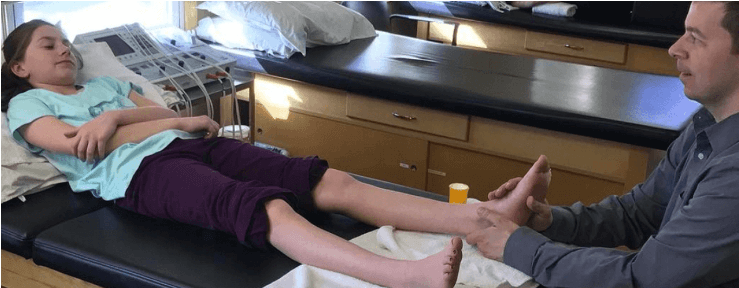The Worst Kind of Ankle Sprain by Dr. Sean Sullivan, PT, DPT – Grand Central

Week 4 of the NFL season just concluded on Monday night following the Kansas City Chiefs last second win over the Washington Redskins. As with just about every week of NFL games comes a host of injuries to key players on contending teams, often times of the season ending variety.
Rookie running back Chris Carson of the Seattle Seahawks suffered a season ending left leg injury during the Seahawks win over the Colts on Sunday night. What was originally diagnosed as a fracture of his left lower leg turned out to be more severe. In addition to the fracture that he suffered in his fibula, Carson suffered a severe syndesmosis tear otherwise known as a “High Ankle Sprain”.
The syndesmosis is a series of ligaments that connect the ends of the two lower leg bones, the tibia and the fibula. A tear of one of these ligaments is a common injury in American football and is generally caused when the athlete’s foot/ankle is pushed into extreme external rotation. It can also be caused by a blow to the lateral aspect of the knee/lower leg with the foot planted which causes the syndesmosis to be over stretched which is what happened in Carson’s case as seen in the picture below.
The words “High ankle sprain” are words an athlete never wants to hear. Unlike a typical lateral ankle sprain which is a tear of one of the lateral ankle ligaments, a syndesmosis tear takes more time to heal. If there is a disruption of the any of the syndesmosis ligaments, these ligaments are stressed any time the athlete tries to bear weight on that limb as the athlete’s body weight and gravity put stress through the lower leg and tries to separate the tibia and fibula. This is the primary reason why recovery from a high ankle sprain can take longer to heal and are prone to reoccurrence.
MRIs are the gold standard for diagnosing a high ankle sprain. Depending on the grade of the tear, a patient may or may not be instructed to bear weight following the injury. Upon imaging, if there is no widening of the space between the tibia/fibula, the fracture is considered stable and are treated conservatively with rest/rehab and can weight bear as tolerated. If there is mild widening of less than 4cm, then the athlete is generally immobilized in a walking boot. If there is significant widening of the mortise of greater than 4cm, this will require surgical treatment which unfortunately is what will end Carson’s season. Following surgery, Carson will likely be immobilized in a plaster cast for 2 weeks and transferred to a cast boot for another 4-6 weeks during which he will be non weight bearing to avoid stress to the healing fracture/ligaments.
